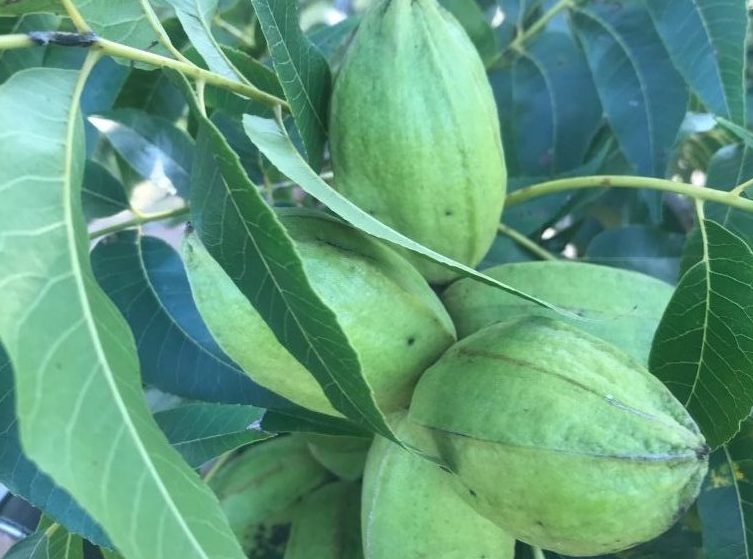By Clint Thompson
The pecan crop is loaded in orchards across the Southeast. But if the crop is to reach its full potential, it needs more sunshine over the next couple of weeks.

Cloudy weather helped doom the crop last year, as sunshine was lacking during the most critical stage of development.
Lenny Wells, University of Georgia (UGA) Extension pecan specialist, described the importance of the next couple of weeks for his producers’ pecans.
“That kernel filling process, which is the stage we’re in right now and we should be in that stage probably through the middle of September for most varieties, it’s just a very high energy demand period for the trees. This is especially true when there’s a big crop on them like we see in most trees out there this year,” Wells said. “The two things they need the most under those conditions, trees and plants get energy from sunlight and water. We can control the water to some extent. Everybody’s irrigating pretty hard at this time where they need it to fill the kernels out. The one thing they can’t control is sunlight. That’s a big part of it.”
He stressed that persistent cloudy weather this time last year contributed to the crop’s low-yielding performance. But last year was much cloudier than what growers are experiencing this season. The crop received adequate sunshine up until around Aug. 16 but only received low levels the following week. That sparked Wells’ latest post in the UGA Pecan Extension Blog.
“Kernel filling is an extremely energy demanding process. Even under optimum conditions, pecan trees can be somewhat depleted of energy during the carbohydrate manufacturing process by which the kernels are filled,” Wells wrote. “However, when one of the two key ingredients (soil moisture and sunlight) is missing there is often not enough energy to finish out this process. The heavier the crop load on the tree, the more demanding the process.”
Most pecan varieties require a month to fill out the kernels, which last from mid-August to mid-September.
“We’ve still got some time. Hopefully, we won’t get back into one of those situations where it’s just continuous cloud cover all the time,” Wells said.









